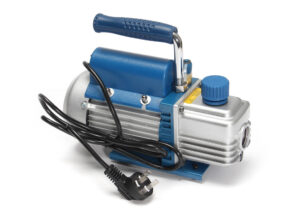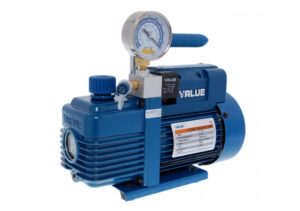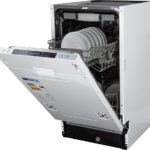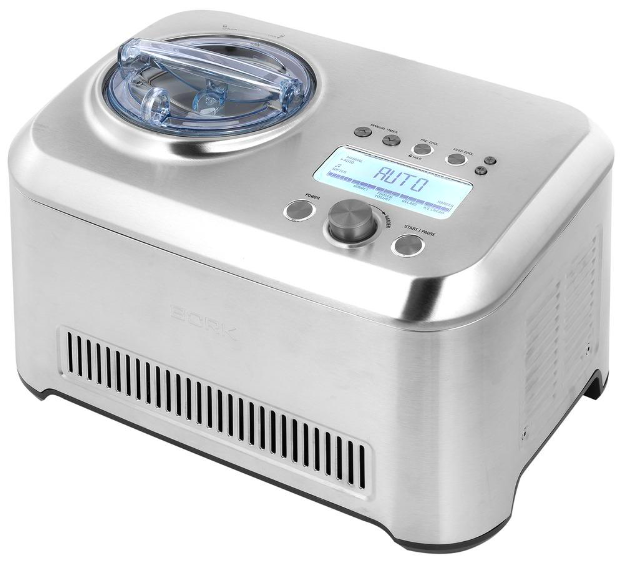How to choose a vacuum pump for pumping air out of an air conditioner
Need to evacuate air from your air conditioner? Use a vacuum pump. Don't understand this topic? Then read on and find out how vacuum pumps work, types of vacuum pumps, recommendations for choosing a vacuum pump.

The content of the article
Vacuum pump, operating principle, design
Vacuum pumps are devices for pumping out vapors/air from various types of closed systems. These include air conditioners and split systems. In such systems there is a circuit with liquid. During the operation of the system, due to various circumstances, these liquids turn into vapor. This steam impairs the operation of the entire device, for example, it interferes with the heating/cooling of the refrigerant in air conditioners, so liquid is sucked out of the systems and air/steam is pumped out.
Let's look at the operating principle and design of a vacuum pump using plastic-rotor models as an example:
There is a housing with two outlets for tubes - one of them is for connecting to the refrigeration circuit, the second is for removing steam from the system. An eccentric rotor with working blades is installed inside the housing. The entire internal structure of the pump is completely sealed: the rotor is hermetically connected to the body, the blades are pushed away from each other by a spring that is located between them, there is a check valve on the outlet tube, which releases air under pressure from the pump, but does not let it inside. The blades are positioned to create multiple sealed sections within the pump.This placement of the elements is necessary so that when air is pumped out of the air conditioner, no gases get back in.
The motor rotates the rotor with blades, sealed sections are formed. One blade seems to be pulling air from the system, the second is blocking the entrance to the system. Together they move air towards the outlet tube. When the pumped air reaches the outlet tube, the blades press on it, increasing the pressure. Due to the pressure, it presses on the check valve and opens it. The air from the system escapes. Condensation forms along with it. There is no point in going deeper into why it is formed. Let's just say that this is due to the difference in pressure. Then the blades return to their original position, and the cycle is repeated until a vacuum is established/the motor has enough power.
Types of vacuum pumps
There are 6 types of vacuum pumps. Below is a list of them with a brief description, features, advantages, and disadvantages:
- Vane rotor. Standard and most popular models. The principle of their operation is described above. The advantages of such devices are low noise level during operation, ease of use, clear design, efficiency, price and availability. The only downside of the models is that you constantly need to change consumables, mainly oil.
- Low vacuum with two pumping stages. Not as popular as the previous ones. They are characterized by high performance due to the presence of two rotors and increased noise levels due to the same two rotors. The disadvantage of such models is the high cost of use.
- Ring-liquid (low vacuum). Some more popular models. They do not need oil to work; instead, they consume water, and in large quantities. They also have high power consumption.
- High vacuum. The main advantage of diffusion vacuum pumps is their high performance - they pump out 4-5 cubic meters of air in less than 30 minutes. Their disadvantage is their fragility - during pressure surges they will quickly fail.
- High vacuum (cryoadsorption). These devices have high efficiency, productivity, and low power consumption. Their work is based on the principle of absorption of gases as the temperature decreases. Such devices are used extremely rarely. This is explained by the fact that synthetic oils are used for their operation. Such oils remain on the elements of the refrigeration circuit and contaminate the system, so additional cleaning is required after using these devices.
- High vacuum (heteroionic). High performance and high efficiency models are rare. The main reason why they are rarely seen is their high price.

How to choose a vacuum pump for pumping air out of an air conditioner. What to look for when choosing a vacuum pump for pumping air out of an air conditioner.
If you are choosing a vacuum pump for your own use, then first familiarize yourself with their types. Choose the right model for your situation. We recommend using a standard rotary vane vacuum pump. It is suitable for most situations where you need to pump air out of the system.
When choosing a device for an air conditioner, pay attention to:
- Duration of continuous operation. 30-40 minutes will be enough - during this time a vacuum pump of sufficient power and performance will pump out all the air from the air conditioner route.
- Maximum and rated power of the device. Power affects the duration of continuous operation of the equipment.A low-power vacuum pump will not be able to pump out all the air from a long refrigeration circuit.
- The length of the refrigeration circuit from which air needs to be evacuated, and the pump capacity. They must match, or the productivity must be greater, otherwise the pump will also not be able to pump out all the air - it will stop at one level. We recommend using pumps with a capacity of 50-150 decimeters per cube per minute. With this performance, the pump will pump out 4-5 cubic meters of gas from the circuit in 30-40 minutes.
- Sealing quality.
- Can the device be used under different conditions?





